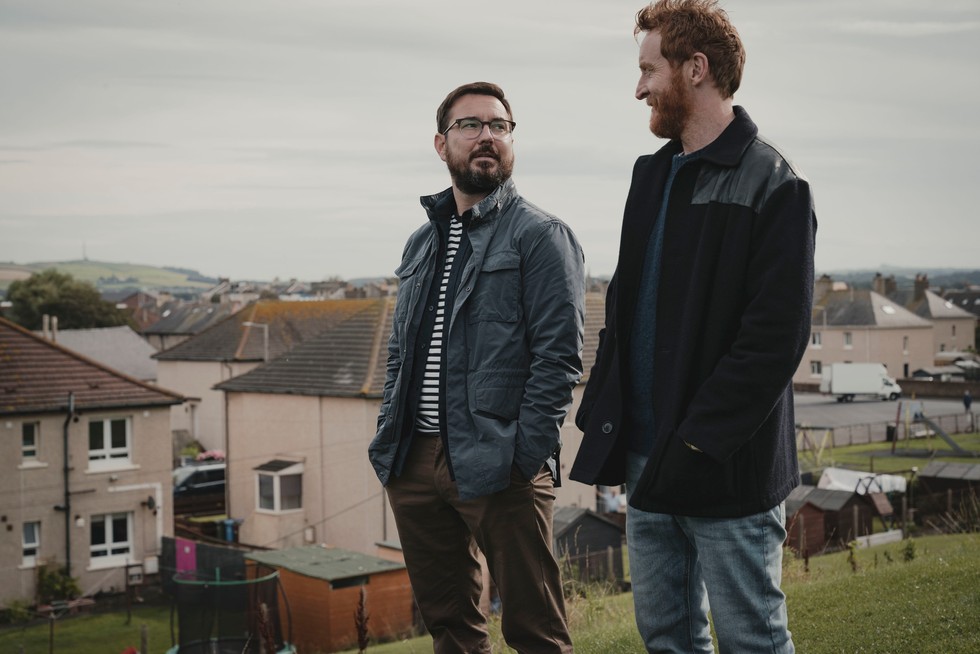Deciphering The Hells Angels: Facts And Fiction

Table of Contents
A Brief History of the Hells Angels
The Hells Angels' origins trace back to post-World War II California. Founded in 1948 in Fontana, California, the club's initial members were largely veterans returning from the war, seeking camaraderie and a sense of belonging. These early years focused on motorcycle riding and the shared experience of brotherhood. However, the club’s early focus on camaraderie soon evolved, and its activities became increasingly controversial. The Hells Angels gradually expanded across the United States and internationally, establishing chapters in various locations and solidifying their presence within the biker gang landscape. This expansion was accompanied by the development of the distinctive Hells Angels insignia and branding, which has become instantly recognizable worldwide, further cementing their image in popular culture.
- Founded in 1948 in Fontana, California.
- Initial members were veterans returning from WWII.
- Early years focused on motorcycle riding and camaraderie.
- Gradual expansion across the United States and internationally.
- Development of the distinctive Hells Angels insignia and branding.
The Hells Angels' Criminal Activities and Allegations
The Hells Angels have a documented history of involvement in various criminal activities. Drug trafficking, violence, racketeering, and other forms of organized crime have been consistently linked to the club, leading to numerous arrests and convictions. Law enforcement agencies worldwide have conducted extensive investigations into the Hells Angels' operations, uncovering evidence of widespread illegal activities. It's crucial to distinguish between substantiated facts and media exaggerations. While the club undeniably has a dark history, the extent of their involvement varies significantly across different chapters and over time. Attributing all criminal acts to the entire organization is an oversimplification.
- Extensive history of involvement in illegal activities.
- Numerous arrests and convictions for various crimes.
- Allegations of organized crime involvement and connections.
- Ongoing legal battles and investigations.
- Varying levels of involvement across different chapters.
The Hells Angels Subculture and Motorcycle Culture
Beyond the criminal aspects, the Hells Angels represent a significant subculture within the broader motorcycle culture. The club places a strong emphasis on brotherhood and loyalty amongst its members, fostering a sense of belonging and shared identity. This strong sense of community is reinforced through unique rituals, traditions, and symbols. Their distinctive clothing, patches, and insignia are not merely fashion statements; they are powerful markers of identity and membership, signifying belonging within a tightly knit group. The Hells Angels also participate actively in motorcycle rallies and events, further contributing to and influencing broader motorcycle culture.
- Strong emphasis on brotherhood and loyalty amongst members.
- Unique rituals and traditions within the club.
- Distinctive clothing, patches, and insignia.
- Participation in motorcycle rallies and events.
- Contribution to and influence on broader motorcycle culture.
Separating Fact from Media Sensationalism
Media portrayals have significantly shaped public perception of the Hells Angels, often exaggerating their criminal activities and overlooking the complex social dynamics within the club. Sensationalized news stories and fictional representations frequently perpetuate stereotypes and misinformation, obscuring the nuances of their history and subculture. It's vital to approach information about the Hells Angels with critical thinking, separating fact from fiction, and recognizing the inherent biases present in many media representations. Responsible journalism and factual reporting are crucial in order to understand this complex organization.
Conclusion
Understanding the Hells Angels requires navigating a complex landscape of fact and fiction. Their history is intertwined with both genuine acts of camaraderie and serious criminal activity. Their subculture, while possessing unique aspects, should be assessed critically rather than through simplistic generalizations. Separating fact from the sensationalized media narratives is crucial for an accurate understanding of this controversial motorcycle club. Understanding the Hells Angels requires critical analysis of both fact and fiction. Continue your exploration to decipher the truth yourself!

Featured Posts
-
 Amundi Msci World Ii Ucits Etf Usd Hedged Dist A Guide To Nav And Its Implications
May 25, 2025
Amundi Msci World Ii Ucits Etf Usd Hedged Dist A Guide To Nav And Its Implications
May 25, 2025 -
 Jenson Button Relives His 2009 Championship Season
May 25, 2025
Jenson Button Relives His 2009 Championship Season
May 25, 2025 -
 From Glasgow To La The Visuals Of Martin Compstons Latest Crime Drama
May 25, 2025
From Glasgow To La The Visuals Of Martin Compstons Latest Crime Drama
May 25, 2025 -
 Nova Fotosesiya Naomi Kempbell Smilivi Ta Vidverti Obrazi
May 25, 2025
Nova Fotosesiya Naomi Kempbell Smilivi Ta Vidverti Obrazi
May 25, 2025 -
 Yubileyniy Vecher Pamyati Sergeya Yurskogo
May 25, 2025
Yubileyniy Vecher Pamyati Sergeya Yurskogo
May 25, 2025
Latest Posts
-
 Klasemen Moto Gp 2025 Apakah Marc Marquez Akan Menjadi Juara
May 26, 2025
Klasemen Moto Gp 2025 Apakah Marc Marquez Akan Menjadi Juara
May 26, 2025 -
 Sirkuit Ayrton Senna Goiania Persiapan Moto Gp Di Brasil Untuk Tahun Depan
May 26, 2025
Sirkuit Ayrton Senna Goiania Persiapan Moto Gp Di Brasil Untuk Tahun Depan
May 26, 2025 -
 Moto Gp 2025 Perkiraan Klasemen Dan Tantangan Untuk Marc Marquez
May 26, 2025
Moto Gp 2025 Perkiraan Klasemen Dan Tantangan Untuk Marc Marquez
May 26, 2025 -
 Goiania Sirkuit Ayrton Senna Menjadi Lokasi Moto Gp Di Brasil Mulai Tahun Depan
May 26, 2025
Goiania Sirkuit Ayrton Senna Menjadi Lokasi Moto Gp Di Brasil Mulai Tahun Depan
May 26, 2025 -
 Moto Gp Argentina 2025 Klasemen Setelah Kemenangan Sprint Race Marc Marquez
May 26, 2025
Moto Gp Argentina 2025 Klasemen Setelah Kemenangan Sprint Race Marc Marquez
May 26, 2025
